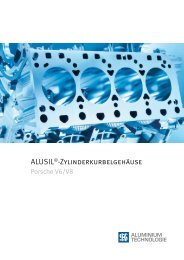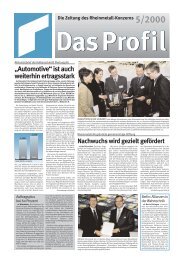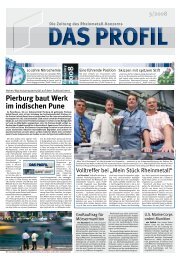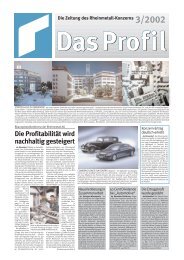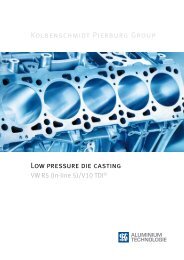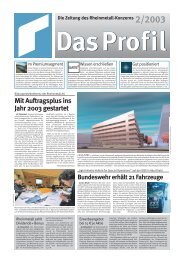ALUSIL ® -Cylinder Blocks Porsche V6/V8 - KSPG AG
ALUSIL ® -Cylinder Blocks Porsche V6/V8 - KSPG AG
ALUSIL ® -Cylinder Blocks Porsche V6/V8 - KSPG AG
You also want an ePaper? Increase the reach of your titles
YUMPU automatically turns print PDFs into web optimized ePapers that Google loves.
Whereas in the standard FSI engines the cooling water flows<br />
around the cylinders from the front to the rear, in the case of<br />
the V10 bi-turbo a cross-flow principle has been implemented.<br />
Thanks to forced flow, the cooling effect is enhanced in<br />
both the cylinder block and the cylinder head.<br />
The oil circuit ducts are partly pre-cast, partly drilled. The<br />
two deep-hole bores centrally arranged in the V, for the main<br />
oil and injection nozzle channels for piston cooling, which<br />
virtually cover the whole block length, are machined at KS<br />
Aluminium-Technologie. The non-pressurized oil drain backs<br />
and cylinder block vent ducts are pre-cast for the <strong>V8</strong> and V10<br />
cylinder blocks. They are arranged externally on the side<br />
walls, in parallel with the cylinders. These channels are connected<br />
with the bedplate through bores in order to exclude<br />
the risk of casting fins being left.<br />
Subsequently, after removing the sand cores, the cylinder<br />
blocks are submitted to first cut machining (Fig. 11).<br />
Adjustment in the crankcase area is achieved by alignment<br />
in the first clamping step, starting from cast locating points<br />
at the interface to the bedplate. To this effect, the three locating<br />
points on the gearbox side are machined and two index<br />
bores (fitting bores) are set.<br />
8<br />
Fig. 9a : The Audi <strong>V6</strong> gasoline engine<br />
Further machining steps in the first and second clamping operations<br />
are the drilling of the oil ducts, pre-drilling of the<br />
cylinders, pre-milling of the main bearing area and cubing of<br />
the external faces. In this last step, all “important” surfaces<br />
are re-milled in order to remove casting fins, for instance, in<br />
order to enable a process-reliable leak test to be carried out<br />
subsequently.<br />
To ensure proper casting quality, the cylinder blocks are<br />
submitted to comprehensive x-ray, hardness and ultrasonic<br />
tests. The latter serves to check the bearing bulkheads for<br />
porosity. The oil and water systems are checked for leaks by<br />
means of a differential pressure test, followed by a 100% visual<br />
inspection before the cylinder blocks are dispatched to<br />
Audi on purpose-designed loading devices.<br />
At AUDI HUNGARIA MOTOR Kft. (AHM), the cylinder blocks<br />
are integrated into the machining line on the locating points<br />
and aligned on gearbox flange level by means of the fitting<br />
bores provided in the gearbox flange. Next, the cylinder<br />
block is machined as an individual part, with most of the<br />
machining work being done in these working steps. Subsequently,<br />
the finished bedplate is “matched” with the cylinder<br />
block, i.e. pinned and bolted. From this moment, the cylinder



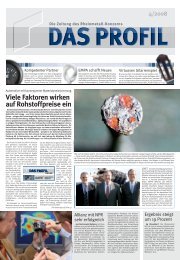
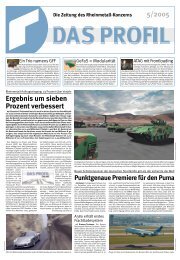
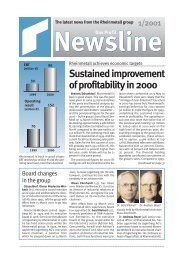

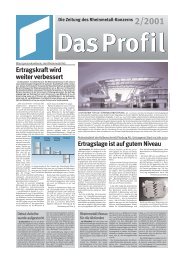
![PDF [1.0 MB] - KSPG AG](https://img.yumpu.com/5513074/1/171x260/pdf-10-mb-kspg-ag.jpg?quality=85)
